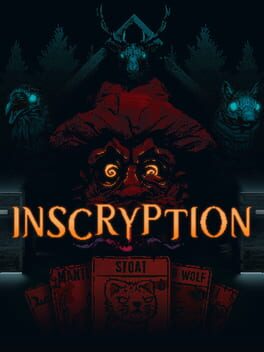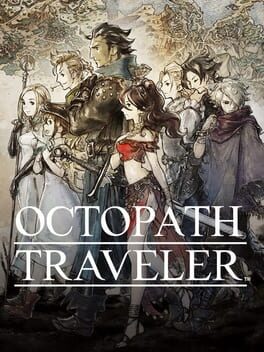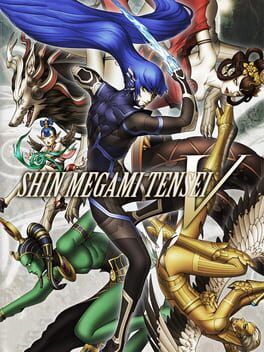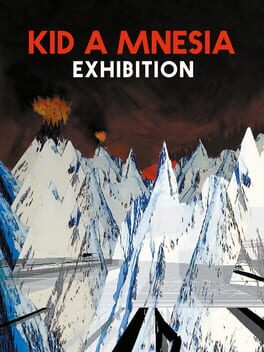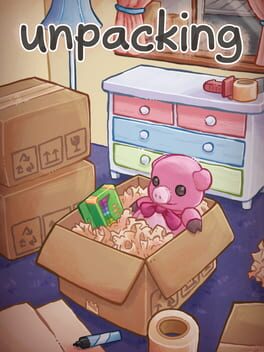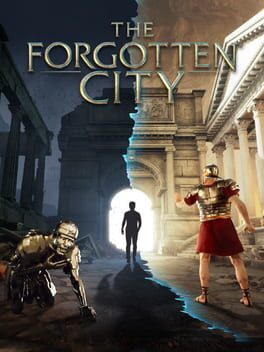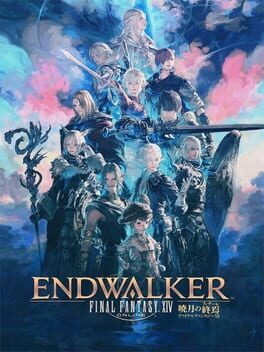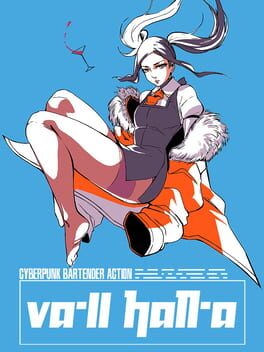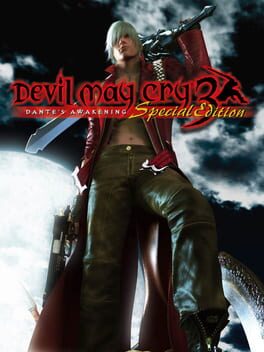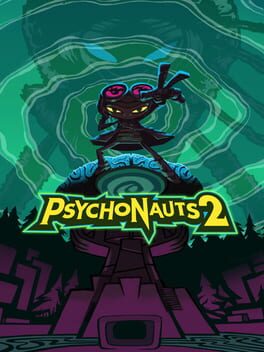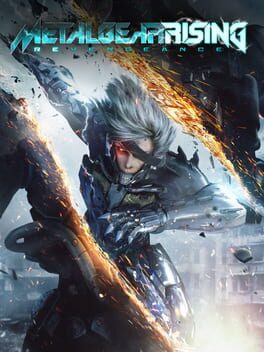Weepboop
BACKER
628 Reviews liked by Weepboop
Inscryption
2021
Octopath Traveler
2018
Shin Megami Tensei V
2021
I love SMT, but I've stalled out on this one. It takes a number of disappointing mechanical steps back from SMT IV Apocalypse, struggles to maintain the series' signature bleak tone, and, most importantly, seriously missteps in its level design. Nominally open world, in that there is a lot of empty space to run through and plenty of collect-a-thon garbage to gather, the game is as linear as can be in truth. This roundabout nature makes exploration long, tiring, and disorienting, which is a problem when it's most of the experience. I'm sure I'll come back and finish it at some point but right now I just don't have the patience.
Shin Megami Tensei V
2021
I love the combat in this game, it has a lot going for it that avoids it falling into the cycle a lot of turn based RPG's go, where you only pick the strongest/super effective move every time. Not that some battles can't turn in to that, but generally I had to think a little more about the best option for each turn.
I did find that the starting magatsuhi skill is basically the best one. Guaranteeing crits every single turn means you're getting a guaranteed 8 action turn with boosted damage. I almost never used any of the other skills I unlocked from completing side quests and whatnot.
Unfortunately the game failed to sell me on anything except the combat. All the environments are insanely barren and boring. And I know that there's an in-game reason for that, but like...if you're designing a 50 hour RPG, maybe don't make an in-universe reason for all the environments to be boring as fuck?
The story feels like it had a bunch of other JRPG stories fed to a computer and this was the result from machine learning. It's just so boring. It's also paced horribly, trying to shove long story info between jarring halts in the otherwise unbroken gameplay sections.
I know comparing this with a certain other monster RPG whose name starts with P is always too easy and an obvious go-to, but this really does feel like Pokémon without the heart.
I did find that the starting magatsuhi skill is basically the best one. Guaranteeing crits every single turn means you're getting a guaranteed 8 action turn with boosted damage. I almost never used any of the other skills I unlocked from completing side quests and whatnot.
Unfortunately the game failed to sell me on anything except the combat. All the environments are insanely barren and boring. And I know that there's an in-game reason for that, but like...if you're designing a 50 hour RPG, maybe don't make an in-universe reason for all the environments to be boring as fuck?
The story feels like it had a bunch of other JRPG stories fed to a computer and this was the result from machine learning. It's just so boring. It's also paced horribly, trying to shove long story info between jarring halts in the otherwise unbroken gameplay sections.
I know comparing this with a certain other monster RPG whose name starts with P is always too easy and an obvious go-to, but this really does feel like Pokémon without the heart.
Never listened to Radio Head so no comment on that.
On pure aesthetics and movement alone, it is able to create some cool sensory alienation, moments when you don't know if you're going with the place, or the place is going with you. Or if you're both just vibing at the same time.
I hope we can see more videogame galleries like this one, closest thing to bringing a museum experience to the medium.
On pure aesthetics and movement alone, it is able to create some cool sensory alienation, moments when you don't know if you're going with the place, or the place is going with you. Or if you're both just vibing at the same time.
I hope we can see more videogame galleries like this one, closest thing to bringing a museum experience to the medium.
Unpacking
2021
This game accomplishes exactly what it needs to, and it it plays smoothly throughout. You can't help but feel warm inside throughout most of the game because of its charming atmosphere. I think it is the perfect length, since the "puzzle" aspect of the game, fitting everything where it needs to go, starts to get stale toward the end.
The Forgotten City
2021
A very intriguing story, with fun and interesting ways to explore the city and the different timelines you can create. The characters, while diverse, are not exactly an all star cast save a few standouts. I would also be remiss to not mention the inevitable problems the game has just by being about a time loop such as redoing various things, but there are features that make that pill easier to swallow.
in a genre well known for conservative sensibilities and a dearth of anthropological and cultural respect, as well as voyeuristic and hedonistic death tourism, blood on the sand stands out as self-aggrandizing, maximalist, and bordering on parodic in a way very few tend to be. a subversive and stately satire this is not, but the mere insertion of 50 cent into a wartorn setting when his previous digital outing humbly involved enacting vengeance against the american criminal underworld says as much about the aughts zeitgeist as our proclivities in the horror genre during that era does. maybe this buries the lede somewhat, because one of the most important facts about this game was only revealed relatively recently, but blood on the sand was alleged to have started as a tom clancy game recently; conflicting reports from development suggested its yarn was spun from a failed covert-one project, an adaptation of bourne trilogy alum robert ludlum's ideas. one article implicitly posits that these prospective titles were stages in a continuum prior to publisher vivendi's decision to use their convenient rights to 50 cent, although its also possible the use of tom clancy was shorthand for use in an interview given that vivendi didn’t have the license to adapt tom clancy’s works. whatever the case, this largely explains the game's constituent elements – fighting tooth and nail through a wartorn middle-east setting, so familiar to video games and film of the era, recontextualized to fit 50 cent.
other games centered around rappers are designed around an understanding of their core ethos; the wu-tang clan, with their sound representing an evocative mix of east asian and black culture, with particular reverence afforded towards martial arts, found themselves on the psx with 1999’s shaolin style, a fighting game that literalized and made tangible the groups stage personae and the aesthetic undercurrents in their discography. or take the def jam franchise, which takes the feuds, the aggression, and the machismo of the music industry during that time and channels that raw energy into a wrestling game developed by AKI. and this was mythological for its cast – there’s an interview with method man that always makes me crack up where he essentially says that all he cared about was having the hottest finishing move in the game. even rap jam volume one, a basketball game for the snes, plays to some of these sensibilities by essentially offering basketball Without Limits. coolio isn’t afraid to throw hands there. rims creak under the weight of dunks from impossible heights. it’s all performance centered around culture, identity, reputation.
what makes 50 cent unique in this regard, especially as far as performance and cultural mythology is concerned, is the now-infamous, oft-referenced incident in which, early in his career, he was shot nine times in south jamaica allegedly as the result of the release of his controversial song, ‘ghetto qu’ran’. ‘bulletproof’ isn’t just the title of a licensed video game, it’s part and parcel of the 50 cent brand and his identity, referenced often in his discography and utilized to demonstrate the artists grit and countercultural edge. the violence of his work is therefore afforded numerous dimensions given his firsthand experience with this kind of trauma, which in turn represents part of the appeal, that kind of verisimilitude. certainly, bulletproof (the game) plays into this mythology. where fighting games seem the natural route for the wu-tang clan, 50 cents life and identity could only ever have seen translation into ludology through firefights. it’s a bit macabre but totally in line with his career sensibilities.
blood on the sand, then, seemingly represents a reactionary inverse to bulletproof’s simple reiteration and expression of the 50 cent persona. instead of playing a nameless, hardened soldier fighting on behalf of an imperialist agenda in the middle east as is the standard in this format, that voiceless force of nature has been replaced by 50 cent, who can easily, cynically, be read as the all-american invulnerable supersoldier - one who built his brand from the ashes of derelict poverty. y'know, bootstraps, the american way. but the game rejects any easy textual understanding. yes, 50, narratively and mechanically, is totally committed as an agent of destruction and havoc, but his quest primarily pits him against a rogues gallery of self-interested judas archetypes; 50 is naturally distrustful and seldom offers aid, only so long as his goals align with other parties. and these rivals are all configured as gangsters, entrepreneurs, those seeking profits. an early conversation is helpful in this regard, in which 50 cent claims new yorks streets are entirely owned by gangsters; his conversational partner claims the middle eastern region theyre in is controlled by organized crime on a scale surpassing that of new york. the kind of americanized conception of gang warfare transplanted onto the middle east revealed through this dick-measuring contest is the crux of blood on the sand’s text, additionally reflected in its color coded enemy design, evoking gang colors and affiliation more than it necessarily does terrorism, as well as in its environmental design, like a hyper-americanized strip club sticking out like a sore thumb. the connotations of the war on terror are there but one gets the sense that blood on the sand uses those familiar political and genre elements as (unfortunately) familiarized backdrop and setting moreso than it does to convey a straightforward narrative about combatting jihadist insurgents.
another thing setting blood on the sand apart from its milieu is 50’s characterization – this alone isn’t revelatory but it’s in stark contrast to others in the genre. uncharted is allowed to disguise its lack of humanity through a constant assault of quips and ironic insincerity, as protagonist nathan drake pilfers the remains of ancient civilizations for profit and slaughters anyone in his path, reenacting colonial tendencies in the process for the sake of ‘a good time’. and this is a constant thread in all the games, encountering ancient societies where something went wrong and the enemy type shifts towards supernatural, impossibly advanced yet primitive ghoul caricatures. these misanthropic attributes are not alone to uncharted, as several other adventure shooters share much of the same problems. perhaps the most brutally honest any of these games has ever been is when you lead a no-holds barred defence against enemies laying siege to a fast food establishment in modern warfare 2.
50 cent, meanwhile, is unceasingly committed to securing the bag – there’s no pretense of nobility or honor here, but he will have banter with the rest of g-unit, air his frustrations with the constantly spiraling nature of his journey to get a skull back, and discuss the setting and architecture with his allies. it's all a matter of debt collection from shady benefactors who continually steer you in the wrong direction, and 50 is content to follow this labyrinthine design so long as payments still on the table. so, blood on the sands rejection of its central middle eastern analogue transforms the game into an interpretive assault on the restraints and foibles of the modern music industry. the whole plot is kickstarted when 50 cents contract isn’t honoured and he isn’t paid a cool 10 mil for a concert he held; a diamond-encrusted skull is offered as a means of recompensation, which becomes the driving force of the narrative and its collection becomes the locus for his rampage. thus, it can be said that blood on the sand is very simply a game about honoring the work of artists, and of fairly compensating them for their labour. one of many traitorous parties in-game is a paramilitary squad who force 50 into committing a heist and then attempt to take the payout for themselves; during the subsequent boss battle, the squad’s commander, voiced by lance reddick, tells 50 to walk away with his life and squander the profit for everyone’s sake. after all, his nephew’s an ardent fan, and 50 should chalk this mishap up to experience before he gets hurt. this read is bolstered by a couple of tidbits: the knowledge that, according to 50, blood on the sand is in part a tie-in to g-unit’s 2008 damning ‘elephant in the sand’ mixtape, which followed a longstanding feud between 50 cent on the one hand and ja rule and fat joe on the other hand, his peers in the industry. additionally, a great deal of blood on the sand’s visual identity and palette was inspired by the film blood diamond of all things, which of course involves atrocities in sierra leone revolving around the highly inhumane and exploitative diamond mining trade, all farmed during a war zone. continuing the read, theres obviously more than a few unsavoury statements one could make about the music industry in this light. that kind of exploitation -> reclamation loop was something i felt that was common to the games mini-arcs.
one other film i didn’t expect to weigh on my mind so heavily over the course of my playthrough was uncut gems! the image of 50 holding a diamond encrusted skull, a symbol of his labour and his persona, is downright operatic. it parallels kevin garnetts role in uncut gems, who perceives entire iridescent universes, with his lived experiences superimposed and rapidly cutting in and out of frame, and the metaphorical blood, sweat, and tears of many in an unethically sourced black opal. he becomes determined, obsessed even, to hold on the alluring gem, as he considers it a symbolic representation of wealth, fortune, and physical prowess - like a good luck charm. clearly, the skull, with its own implied sordid history, has similar value for 50 as well - it's considered priceless, but his intentions with it are undisclosed for the entire narrative. he simply wants it. both fictionalized portrayals of these 'characters' are in conversation with their mythologized roles in culture, but where uncut gems is concerned with destiny, stability, and fortune, with questions of materialism and faith at the forefront, blood on the sand makes no such appeals to higher powers – 50 is, after all, bulletproof, and the game is more than happy to let him manifest his own payback narrative, the gods be damned. the exploitation of miners in uncut gems’ prologue frames its narrative, but through bombast and hyperbole 50 uses the lens of a militarized zeitgeist to take revenge on his own enemies in the industry, both real and perceived - which serves its purpose as a reclamation narrative.
perhaps these are some highbrow, navel-gazey interpretations and readings on why you should play blood on the sand. but you wanna know the lowbrow, crass, real reason? the game’s just fun as hell. even leaving aside its aesthetics this is a white-knuckled responsive third person shooter, rapidly maneuvering you through conflict after conflict in an arcade setting with more of a semblance of actual encounter design than the majority of its peers. these mechanics are framed by an unrelenting tempo of macro and micro goals in visually distinguishable and legible skirmishes while aiming for combo chains and high scores. 50 cent and devil may cry’s dante alike both see the value of taunting enemies to bolster their ranks and to style on their enemies. 50 cent basically gets heat moves as well, and he can activate max paynes bullet time. this bullet time mechanic is known as gangsta fire, and it essentially makes 50 move faster while also slowing down time. its meter is quite strict and can only reliably be filled up quickly by means of stage pickups, meaning that there's a balancing act between meter preservation and combo priority at all times. and it’s all set to a wide selection of 50 cents discography, freely customizable in the games playlist function. even where the game fails in its design from time to time (optional scoring goals are too often intertwined with the overt objective of the mission, thus not pushing players out of their comfort zone; an overabundance of helicopter encounters, charmingly explained away by 50 cent’s son’s obsession with them and request to include them; gold ranks are almost impossible to acquire outside of hard mode), the experience of listening to P.I.M.P. while racking up the body count with a mossberg and with a LMG as 50 hurls shittalk is unlike anything else in the medium. but i think this paragraph is fairly obvious to anyone who’s played this. so here’s my consensus: i was grinning ear to ear the whole time. this is by far one of the finest exploitation genre games you can play, bordering on high art. in a games industry that now lies about american war crimes, and in a music industry dominated by spotify, blood on the sand is one of the last bulwarks of honesty left. hands down the most culturally significant response to 9/11 right here in this game.
(this game invokes dmca's ire so almost all the gameplay footage you can find of it online doesnt have the soundtrack blaring. totally misrepresents the intensity of the experience imo! no 21 questions or candy shop though...)
other games centered around rappers are designed around an understanding of their core ethos; the wu-tang clan, with their sound representing an evocative mix of east asian and black culture, with particular reverence afforded towards martial arts, found themselves on the psx with 1999’s shaolin style, a fighting game that literalized and made tangible the groups stage personae and the aesthetic undercurrents in their discography. or take the def jam franchise, which takes the feuds, the aggression, and the machismo of the music industry during that time and channels that raw energy into a wrestling game developed by AKI. and this was mythological for its cast – there’s an interview with method man that always makes me crack up where he essentially says that all he cared about was having the hottest finishing move in the game. even rap jam volume one, a basketball game for the snes, plays to some of these sensibilities by essentially offering basketball Without Limits. coolio isn’t afraid to throw hands there. rims creak under the weight of dunks from impossible heights. it’s all performance centered around culture, identity, reputation.
what makes 50 cent unique in this regard, especially as far as performance and cultural mythology is concerned, is the now-infamous, oft-referenced incident in which, early in his career, he was shot nine times in south jamaica allegedly as the result of the release of his controversial song, ‘ghetto qu’ran’. ‘bulletproof’ isn’t just the title of a licensed video game, it’s part and parcel of the 50 cent brand and his identity, referenced often in his discography and utilized to demonstrate the artists grit and countercultural edge. the violence of his work is therefore afforded numerous dimensions given his firsthand experience with this kind of trauma, which in turn represents part of the appeal, that kind of verisimilitude. certainly, bulletproof (the game) plays into this mythology. where fighting games seem the natural route for the wu-tang clan, 50 cents life and identity could only ever have seen translation into ludology through firefights. it’s a bit macabre but totally in line with his career sensibilities.
blood on the sand, then, seemingly represents a reactionary inverse to bulletproof’s simple reiteration and expression of the 50 cent persona. instead of playing a nameless, hardened soldier fighting on behalf of an imperialist agenda in the middle east as is the standard in this format, that voiceless force of nature has been replaced by 50 cent, who can easily, cynically, be read as the all-american invulnerable supersoldier - one who built his brand from the ashes of derelict poverty. y'know, bootstraps, the american way. but the game rejects any easy textual understanding. yes, 50, narratively and mechanically, is totally committed as an agent of destruction and havoc, but his quest primarily pits him against a rogues gallery of self-interested judas archetypes; 50 is naturally distrustful and seldom offers aid, only so long as his goals align with other parties. and these rivals are all configured as gangsters, entrepreneurs, those seeking profits. an early conversation is helpful in this regard, in which 50 cent claims new yorks streets are entirely owned by gangsters; his conversational partner claims the middle eastern region theyre in is controlled by organized crime on a scale surpassing that of new york. the kind of americanized conception of gang warfare transplanted onto the middle east revealed through this dick-measuring contest is the crux of blood on the sand’s text, additionally reflected in its color coded enemy design, evoking gang colors and affiliation more than it necessarily does terrorism, as well as in its environmental design, like a hyper-americanized strip club sticking out like a sore thumb. the connotations of the war on terror are there but one gets the sense that blood on the sand uses those familiar political and genre elements as (unfortunately) familiarized backdrop and setting moreso than it does to convey a straightforward narrative about combatting jihadist insurgents.
another thing setting blood on the sand apart from its milieu is 50’s characterization – this alone isn’t revelatory but it’s in stark contrast to others in the genre. uncharted is allowed to disguise its lack of humanity through a constant assault of quips and ironic insincerity, as protagonist nathan drake pilfers the remains of ancient civilizations for profit and slaughters anyone in his path, reenacting colonial tendencies in the process for the sake of ‘a good time’. and this is a constant thread in all the games, encountering ancient societies where something went wrong and the enemy type shifts towards supernatural, impossibly advanced yet primitive ghoul caricatures. these misanthropic attributes are not alone to uncharted, as several other adventure shooters share much of the same problems. perhaps the most brutally honest any of these games has ever been is when you lead a no-holds barred defence against enemies laying siege to a fast food establishment in modern warfare 2.
50 cent, meanwhile, is unceasingly committed to securing the bag – there’s no pretense of nobility or honor here, but he will have banter with the rest of g-unit, air his frustrations with the constantly spiraling nature of his journey to get a skull back, and discuss the setting and architecture with his allies. it's all a matter of debt collection from shady benefactors who continually steer you in the wrong direction, and 50 is content to follow this labyrinthine design so long as payments still on the table. so, blood on the sands rejection of its central middle eastern analogue transforms the game into an interpretive assault on the restraints and foibles of the modern music industry. the whole plot is kickstarted when 50 cents contract isn’t honoured and he isn’t paid a cool 10 mil for a concert he held; a diamond-encrusted skull is offered as a means of recompensation, which becomes the driving force of the narrative and its collection becomes the locus for his rampage. thus, it can be said that blood on the sand is very simply a game about honoring the work of artists, and of fairly compensating them for their labour. one of many traitorous parties in-game is a paramilitary squad who force 50 into committing a heist and then attempt to take the payout for themselves; during the subsequent boss battle, the squad’s commander, voiced by lance reddick, tells 50 to walk away with his life and squander the profit for everyone’s sake. after all, his nephew’s an ardent fan, and 50 should chalk this mishap up to experience before he gets hurt. this read is bolstered by a couple of tidbits: the knowledge that, according to 50, blood on the sand is in part a tie-in to g-unit’s 2008 damning ‘elephant in the sand’ mixtape, which followed a longstanding feud between 50 cent on the one hand and ja rule and fat joe on the other hand, his peers in the industry. additionally, a great deal of blood on the sand’s visual identity and palette was inspired by the film blood diamond of all things, which of course involves atrocities in sierra leone revolving around the highly inhumane and exploitative diamond mining trade, all farmed during a war zone. continuing the read, theres obviously more than a few unsavoury statements one could make about the music industry in this light. that kind of exploitation -> reclamation loop was something i felt that was common to the games mini-arcs.
one other film i didn’t expect to weigh on my mind so heavily over the course of my playthrough was uncut gems! the image of 50 holding a diamond encrusted skull, a symbol of his labour and his persona, is downright operatic. it parallels kevin garnetts role in uncut gems, who perceives entire iridescent universes, with his lived experiences superimposed and rapidly cutting in and out of frame, and the metaphorical blood, sweat, and tears of many in an unethically sourced black opal. he becomes determined, obsessed even, to hold on the alluring gem, as he considers it a symbolic representation of wealth, fortune, and physical prowess - like a good luck charm. clearly, the skull, with its own implied sordid history, has similar value for 50 as well - it's considered priceless, but his intentions with it are undisclosed for the entire narrative. he simply wants it. both fictionalized portrayals of these 'characters' are in conversation with their mythologized roles in culture, but where uncut gems is concerned with destiny, stability, and fortune, with questions of materialism and faith at the forefront, blood on the sand makes no such appeals to higher powers – 50 is, after all, bulletproof, and the game is more than happy to let him manifest his own payback narrative, the gods be damned. the exploitation of miners in uncut gems’ prologue frames its narrative, but through bombast and hyperbole 50 uses the lens of a militarized zeitgeist to take revenge on his own enemies in the industry, both real and perceived - which serves its purpose as a reclamation narrative.
perhaps these are some highbrow, navel-gazey interpretations and readings on why you should play blood on the sand. but you wanna know the lowbrow, crass, real reason? the game’s just fun as hell. even leaving aside its aesthetics this is a white-knuckled responsive third person shooter, rapidly maneuvering you through conflict after conflict in an arcade setting with more of a semblance of actual encounter design than the majority of its peers. these mechanics are framed by an unrelenting tempo of macro and micro goals in visually distinguishable and legible skirmishes while aiming for combo chains and high scores. 50 cent and devil may cry’s dante alike both see the value of taunting enemies to bolster their ranks and to style on their enemies. 50 cent basically gets heat moves as well, and he can activate max paynes bullet time. this bullet time mechanic is known as gangsta fire, and it essentially makes 50 move faster while also slowing down time. its meter is quite strict and can only reliably be filled up quickly by means of stage pickups, meaning that there's a balancing act between meter preservation and combo priority at all times. and it’s all set to a wide selection of 50 cents discography, freely customizable in the games playlist function. even where the game fails in its design from time to time (optional scoring goals are too often intertwined with the overt objective of the mission, thus not pushing players out of their comfort zone; an overabundance of helicopter encounters, charmingly explained away by 50 cent’s son’s obsession with them and request to include them; gold ranks are almost impossible to acquire outside of hard mode), the experience of listening to P.I.M.P. while racking up the body count with a mossberg and with a LMG as 50 hurls shittalk is unlike anything else in the medium. but i think this paragraph is fairly obvious to anyone who’s played this. so here’s my consensus: i was grinning ear to ear the whole time. this is by far one of the finest exploitation genre games you can play, bordering on high art. in a games industry that now lies about american war crimes, and in a music industry dominated by spotify, blood on the sand is one of the last bulwarks of honesty left. hands down the most culturally significant response to 9/11 right here in this game.
(this game invokes dmca's ire so almost all the gameplay footage you can find of it online doesnt have the soundtrack blaring. totally misrepresents the intensity of the experience imo! no 21 questions or candy shop though...)
Final Fantasy V
2021
The definitive action game. I wasn't a fan of action games when I started it, but this one won me over, partly due to the style system and partly due to the super memorable boss lineup. Every action game should really have something like the gunslinger style, where you can disrupt enemies that are sneaking up for you in a way other than dodging. Every action game should have rival characters like Vergil, who evolve in their abilities in the same way you do for climactic showdowns that repeatedly escalate in both mechanical complexity and narrative stakes. The weapons should have personality and depth, the enemies and their attacks should be distinct... anything you think an action game needs, Devil May Cry 3 has it. Action games today still struggle to hit this perfect balance, but with this game, even an action game skeptic like me has to admit the potential in the genre.
